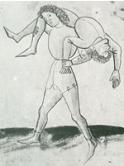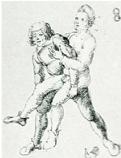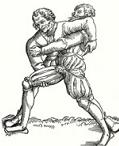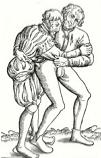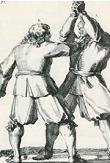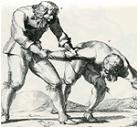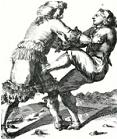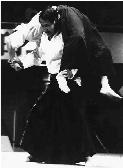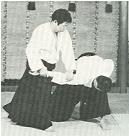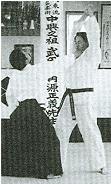We find bu also in bushi that translates to warrior, military or troops and in bujutsu, the techniques or craft of the military, particularly methods for using weapons and other equipment.
In Japan, which was a clan or feudal society, there was no central school for the art of war, but hundreds of different schools, ryu, that taught similar curricula consisting of techniques for archery, the halberd, spear, sword, cavalry, tying up prisoners, hand-to-hand fighting, etc.
The Japanese art of war did not develop in the same way as in Europe where technological advances came to influence tactics, and the open debate and development within science and the arts influenced strategy development.
In Europe development made swords, spears and hand-to-hand fighting obsolete. They were forgotten or turned into sports like wrestling, boxing, shooting, fencing, cross country running, swimming, horse riding, etc. This was not the case with Japan which was a technologically, military and politically retarded country up until the end of the 19th century.
In Japan the old techniques were preserved and cherished until modern times, especially in some circles, and especially so during the strongly nationalistic and militaristic period from the turn of the century to the end of WW2.
I svenskan har vi uttrycket pennan och svärdet. Japanerna talar på samma sätt om bunbu, som står för penseln/ordet/reglerna/lagarna och vapenmakt/våld. Man ansåg, med rätta får man väl säga, att staten vilar på lagen och våldet, som staten har ensamrätt till, det vill säga rättsapparat och försvar. Bunbu kan också betyda militärakademi eftersom man ansåg att de som skulle utöva våld med nödvändighet måste ges en boklig bildning som en balanserande och modererande faktor.
Stavelsen bu finner vi också i bushi som betyder krigare och i bujutsu som betyder krigarens tekniker, rätta handgrepp och metoder för att använda olika vapen och annan utrustning.
I svenskan har vi uttrycket pennan och svärdet. Japanerna talar på samma sätt om bunbu, som står för penseln/ordet/reglerna/lagarna och vapenmakt/våld. Man ansåg, med rätta får man väl säga, att staten vilar på lagen och våldet, som staten har ensamrätt till, det vill säga rättsapparat och försvar. Bunbu kan också betyda militärakademi eftersom man ansåg att de som skulle utöva våld med nödvändighet måste ges en boklig bildning som en balanserande och modererande faktor.
Stavelsen bu finner vi också i bushi som betyder krigare och i bujutsu som betyder krigarens tekniker, rätta handgrepp och metoder för att använda olika vapen och annan utrustning.
In English we talk of the pen and the sword. The Japanese likewise talk of bunbu, which stands for brush/word/rules/laws and armed force and violence.
It was thought, and rightly so one must say, that the state rests upon law and violence, of which the state has a monopoly that is justice (courts, prisons, police) and military defense. Bunbu can also stand for military academy since it was felt that he who shall be allowed to use violence must by necessety be thoroughly educated in the liberal arts, as a balancing and moderating factor.
At the time of WW2
We have in the West only a limited number of functional hand-to-hand techniques that are practiced and developed within certain military units. In Japan on the other hand the techniques from 1400-1700 are still practiced even though they may not be very effective since they were developed for a milieu that no longer exists.
However, a valuable discovery is made in Japan: intensive training in hand-to-hand fighting techniques can have a fostering and personality developing effect on the individual.


